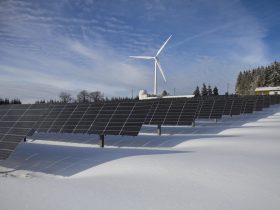
The motion was first mentioned in Galileo Galilei`s works. He described the main motion principles of an object while it is falling horizontally. It does not matter how much the objects weigh they accelerate with the same rate. However, the scientist could not make proper research since the needed equipment was still not invented. The works of the prominent scientist are relevant until now, and the motion principles are applied widely for the development of modern devices.
At Progressive Automations Inc, these basic principles are applied widely to develop and manufacture a variety of linear actuators. They are used in all the fields, in a plethora of applications.
Linear Actuators Produce Linear Motion
Linear actuators are designed to produce linear motion. The primary motion source is not necessarily linear motion itself. It can be rotary motion, like in the case with a motor. Then, some other elements, belts, for example, convert a different motion type into linear motion. Nowadays, electric linear actuators are the most common. The main reasons for their popularity are:
- Their safety: they don’t contain hazardous materials and liquids that can leak and contaminate the environment;
- They operate silently: most of the electric linear actuators produce noise under 45 dB;
- They are cheap: even though the initial investment might be slightly higher than in the case with other actuators, electric ones practically do not require any maintenance. Thus, in the long-term they are much cheaper than any other type of actuators;
- They allow for high speeds and precision levels. It means that electric actuators can be applied in a variety of different industries.
Linear Motion in Everyday Application
Linear motion is applied unexpectedly broadly. Nowadays, it is used in many devices, it is just enough to have a look around to find many examples:
- Medical devices: linear actuators that work based on the linear motion principles are used to lift and lower operating room beds, dentist chairs, to manipulate X-ray machines and MRI scanners, and similar.
- Aerospace: linear motion and the related devices have found the widest application in the aerospace industry. Seats, equipment, all types of devices use linear actuators.
- The packaging industry is also known for its wide application of linear actuators. Loads positioning, palletizing, pick and place operations, and similar – all the activities are performed with the application of linear actuators.
- Furniture and interior: almost everywhere, where home automation devices are applied, linear motion is used. Sliding doors, height-adjustable tables, TV lifts, display cases – linear actuators are needed for all these devices. The items can be used everywhere. You might want to install a height-adjustable table in your home office, TV lifts in your living room or even yard. Some people use linear actuators to make more useful and comfortable the indoors and outdoors of their yachts, and similar.
Linear motion control systems are very straightforward. Normally, they consist of three basic components:
- A motor;
- A controller;
- A drive (an amplifier).
A controller is responsible for the planning of a trajectory. Further, it sends a signal to the drive. Then, the needed voltage is applied to the motor, and the motor starts operating.
Linear motion control systems can control a movement of a specific load which, as a result, performs some work. Thus, these systems can control the speed, torque, position of a load. They can be used to position an object, to synchronize or separate elements, to start or stop the motion of an object.
Forces That Affect Linear Motion
Linear motion can be determined as something constant but only in the case if nothing influences the object. In the normal environment, it is, however, impossible. There are so many forces that influence the linear movement of an object.
One of the main forces that would not allow any object to move on its own is gravity. It pulls everything downward. So, when you throw something, a downward curve will be formed. So, if you use a linear actuator, its motor needs to overcome gravity. The motor force also is influenced by some factors. For instance, put something on the actuator, and you will see that it is more complicated for it to resist gravity. It will slow down many parameters such as speed, velocity, and so on.
One more force that influences the linear motion is friction. Even the slightest wind can influence the linear movement of an actuator. While in the vacuum, an object can move in a particular direction constantly. Thus, linear motion seems to be something simple, but it is overly complex.







Leave a Reply